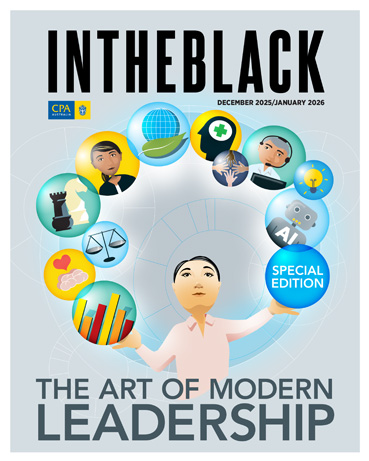Loading component...
At a glance
The age of one-size-fits-all training is over.
Smarter, more personalised learning and development (L&D) experiences are taking its place, as emerging technologies — particularly artificial intelligence — now enable programs to adapt in real time to individual roles, goals and skill gaps.
It is a personalised approach that is leading to significantly better business outcomes. According to LinkedIn’s Workplace Learning Report 2025, organisations that value career development, such as leadership training, coaching and internal mobility, outpace others on key indicators of business success, including attracting and retaining staff.
The key enabler of this transformation in L&D programs is the data that organisations can now access to understand how employees learn and where support is needed.
In particular, popular learning management systems (LMSs), such as LinkedIn Learning and Coursera, can capture a wide range of metrics: which courses employees complete, how long they spend on each module or quiz, assessment results, areas where they drop off and what content they return to.
Combined with other inputs, such as role requirements, manager feedback and career aspirations, this information builds a detailed picture of each employee’s needs and preferences, which is helping organisations provide effective development pathways, says Jessica May, learning and development manager at HR agency HumanX.
“Many LMS platforms — both free and subscription-based — now provide catalogues of learning content that employees can choose from,” May explains.
“They can self-select what they need to know or what they are interested in, at their own pace.”
Organisations can leverage that data and identify specific challenges, strengths and aspirations of their staff, so they can recommend the right learning content, she says.
“It also means they can deliver it at the most effective moment — whether that’s when someone is starting a new role, ahead of a promotion or in response to changing business needs. It transforms L&D from a static offering into a strategic tool for meaningful, career-aligned development,” May says.
Support employees to learn by choice
Adaptive learning is a type of instruction that combines computer algorithms and data analytics to offer a personalised and individualised approach to learning. It is a rapidly growing market and is expected to reach A$34 billion (US$22.3 billion) by 2032.
Research shows that adaptive learning creates higher retention and engagement rates as users respond to personalised techniques. For example, extra resources and exercises are provided if a learner needs help understanding a certain concept. Alternatively, the platform will show harder content if they excel.
Workplace expert Michelle Gibbings notes that “from a neuroscience standpoint, our brains respond better to choice than to mandates — they prefer options, autonomy and relevance”.
Having access to a learning program that recognises those choices means that people take ownership of their own development and apply what they learn in a meaningful way, she adds.
“When a learning platform offers flexibility in what, when and how people learn, it increases engagement. And higher engagement makes it more likely that the learning will stick.”
Provide guidance and accountability
While adaptive learning certainly helps personalise experiences, it is important that managers still have open conversations with employees about their learning goals and interests, Gibbings argues.
“To be an effective leader, you really need to sit down with your team members and have a conversation about their learning and interests,” she says.
“There may be some things that you are interested in them doing — and you need them to take those on — but you also want to find out what module or course they have self-selected and ask how it applies to their role or how it has helped them.”
Accountability is also important, May adds. Providing access to a learning platform without coming back to see what the outcomes are defeats the purpose.
“We see organisations cancelling subscriptions because people aren’t engaging with these platforms. You might find only five to 10 per cent of employees using them — unless use is tied to performance and quarterly or monthly check-ins.
“It is about [implementing L&D platforms] with purpose and giving people direction in terms of what they need to do,” she says.
“When they know what success looks like, then employees are more likely to go out and actually do the learning and take the steps to get there.”

